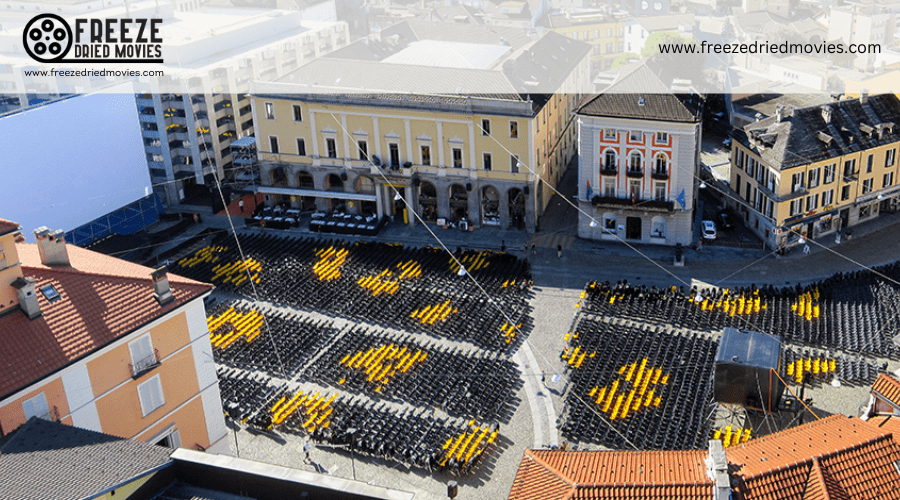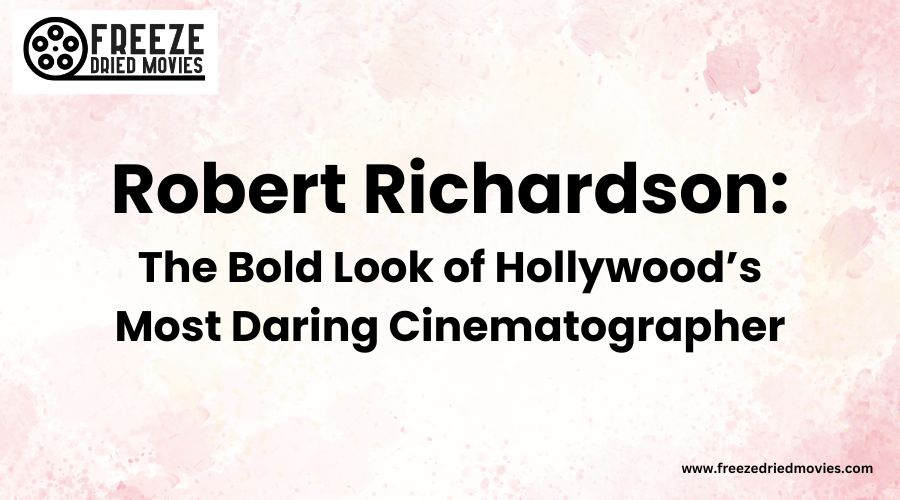Roger Deakins: Master of Light and Shadow in Modern Cinema

Roger Deakins redefines cinematography with his masterful balance of natural light and shadow. You'll recognize his distinctive visual style through deliberate compositions, strategic underexposure, and an emotional authenticity that elevates every frame. His seamless shift from film to digital demonstrates his technical versatility, while collaborations with the Coen Brothers and Denis Villeneuve have produced some of cinema's most striking visuals. His methodical approach transforms ordinary scenes into profound visual poetry that rewards closer examination.
Key Takeaways
- Deakins creates emotional depth through strategic use of shadows and natural light sources.
- His masterful chiaroscuro technique adds psychological weight and visual drama to ordinary scenes.
- Deakins' signature desaturated visual style reveals emotional truth rather than cinematic glamour.
- His preference for wide-angle lenses positioned close to actors establishes intimate viewer connections.
- Collaborations with directors like the Coen Brothers and Villeneuve showcase his adaptable yet distinctive visual language.
Deakins' Visual Philosophy: Capturing Authenticity and Emotion
While many cinematographers chase visual spectacle, Roger Deakins stands apart through his unwavering commitment to authenticity and emotional resonance. You'll notice his minimalist approach in every frame—he prioritizes natural light, strategic shadows, and simple compositions to create immersive realism that pulls you into the story.
Deakins' mastery lies in his ability to poetize everyday scenes through deliberate color choices and contrast that transform mundane moments into striking visual statements. His thoughtful camera movement never distracts but rather enhances the narrative's thematic undercurrents. This precision stems from meticulous pre-production planning, ensuring each frame serves the story's emotional core.
Through his manipulation of light and shadow, Deakins doesn't just show you a scene—he makes you feel its psychological weight. His signature style of natural lighting techniques has earned him two Academy Awards for his work on films like "1917" and "Blade Runner 2049."
The Art of Naturalistic Lighting: Deakins' Signature Approach
Deakins' emotional authenticity manifests most powerfully through his revolutionary approach to lighting—perhaps the most distinctive element of his visual signature. His commitment to naturalistic lighting creates scenes that feel genuinely lived-in rather than artificially constructed.
His masterful use of practical lighting sources—lamps and candles seamlessly blended with available daylight—giving his work an immediate credibility. The interplay of light and shadow in his chiaroscuro lighting technique adds depth that intensifies narrative emotion without calling attention to itself.
Deakins' deliberate use of underexposure and silhouettes heightens tension while maintaining realism. This authenticity extends to his technical innovations, like the bleach-bypass process that produces his characteristic desaturated visual style—stripping away excess to reveal emotional truth beneath glossy cinematic convention. Much like the pioneers of matte painting mastery in 1950s cinema, Deakins creates depth and visual grandeur that transports audiences beyond their imagination.
Evolution From Film to Digital: Embracing Technological Change
Although many cinematographers resisted the digital revolution, Roger Deakins approached this seismic industry migration with characteristic pragmatism and curiosity. You'll find his shift from film to digital represents not just technical adaptation but artistic evolution. When Deakins embraced digital cameras for "Skyfall," he demonstrated how this emerging technology could enhance his visual storytelling without compromising his distinctive style.
As director of photography, he's proven that the art form transcends the medium. His meticulous approach to light and shadow remains consistent whether capturing images on celluloid or digital sensors. You can see how Deakins doesn't view digital as a replacement for film but as another powerful tool in his cinematographer's toolkit. His work demonstrates that visual style depends more on the artist's eye than the camera's mechanics. Like those who mastered color grading techniques during cinema's transition from black and white to color, Deakins expertly adapted to new technological possibilities while maintaining his artistic vision.

Collaborative Vision: Working With the Coen Brothers and Denis Villeneuve
Throughout his illustrious career, Roger Deakins has demonstrated that cinematography thrives at the intersection of technical mastery and creative partnership. His enduring collaboration with the Coen Brothers spans decades, photographing their films since 1984's Nineteen Eighty-Four. This partnership has allowed Deakins to develop a distinct visual language that complements their unique storytelling approach.
Similarly, his work with Denis Villeneuve on films like Prisoners, Sicario, and Blade Runner 2049 showcases his remarkable adaptability. You'll notice how Deakins tailors his approach to lighting, shadow, and camera placement to serve each director's vision while maintaining his distinctive artistic expression. Both filmmakers consistently praise his ability to elevate narrative through cinematography.
These collaborative relationships haven't just produced visually stunning films—they've cemented Deakins' status as one of the most influential cinematographers of his generation. His mastery of visual storytelling shares similarities with Martin Scorsese's approach to Italian American identity in his influential films that changed Hollywood.
Visual Storytelling Through Prime Lenses and Composition
When examining Roger Deakins' approach to cinematography, his dedication to prime lenses and meticulous composition immediately stands out. You'll notice his preference for wide-angle lenses positioned close to actors, creating an intimate visual connection that pulls you into the scene. His compositions brilliantly employ the rule of thirds, guiding your eye across perfectly balanced frames that never feel static.
Deakins' mastery reveals itself through powerful silhouettes and minimal elements that speak volumes. His dramatic lighting transforms ordinary scenes into emotional landscapes while maintaining a naturalistic quality that never betrays the narrative. The strategic placement of characters within the frame and thoughtful use of depth of field guarantee every visual choice serves the story. His camera movements are deliberate yet unobtrusive, always supporting performances rather than overshadowing them.
From Shawshank to Blade Runner: Defining Moments in Deakins' Career
A career spanning four decades has cemented Roger Deakins' status as cinematography's modern maestro, with several landmark films serving as pillars of his artistic legacy.
In The Shawshank Redemption, you'll notice his masterful use of natural lighting creating hope within prison walls. His partnership with the Coen brothers yielded visual masterpieces like Fargo and No Country for Old Men, showcasing his versatility across genres.
Deakins' nickname "Prince of Darkness" emerged from his expert manipulation of shadows in films like Sicario, where his lighting choices evoke palpable tension. His collaboration with Denis Villeneuve reached its apex in Blade Runner 2049, where minimalist compositions and innovative color palettes transport you to a dystopian future.
Throughout his career, Deakins has redefined cinematography by seamlessly blending practical and digital techniques.
Raph_PH, RogDeakinsBFI120921 (16 of 17) (51473086144) (cropped), CC BY 2.0
Roger_Deakins_Feb-2011_02.jpg: David Torcivia derivative work: — Finemann (talk), Roger Deakins Feb-2011 02 (cropped), CC BY-SA 2.0




